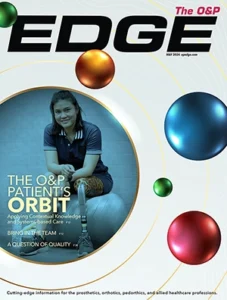
Why do we collect patient outcomes? For everyday clinical practice, collecting outcomes allows clinicians to track patient progress, make changes as needed to the patient’s care plan, and afford patients the ability to understand how they are doing.
The value of outcomes is increased when they are benchmarked against normative scores. These normative scores allow clinicians to understand how their patients have improved from the prior visit and that their improvement has them on track with comparable patient cases, based on various characteristics. Normative values not only allow us to track patient progress, but also contextualize patient progress in a meaningful way. It’s the difference between simply saying, “You’re doing well—you’ve improved your mobility by five points compared to earlier this year!” and, “You’re doing well—you are now in the top quarter percentile for mobility compared to your peers with similar age, amputation level, and cause of amputation!”
Support authors and subscribe to content
This is premium stuff. Subscribe to read the entire article.




